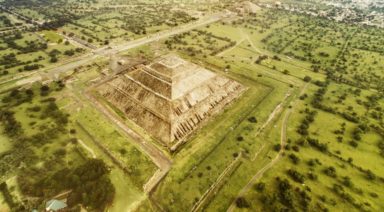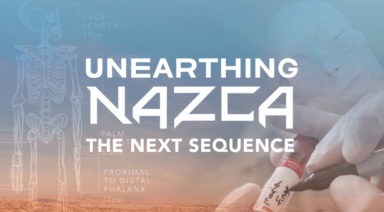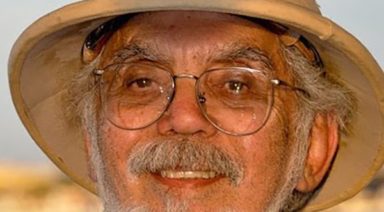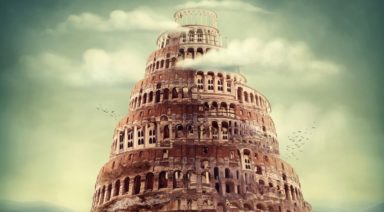Evidence the Knights Templar Migrated to Brazil

In the heart of Brazil lies a cave with carvings that may rewrite history. Long before Columbus set foot in the New World, a Medieval society had already taken root. Now researchers are looking for what drove this group across the Atlantic Ocean.
What were they in search of, and what secrets do they now offer the world? A new documentary titled, “The Brazilian Templars Mystery,” sheds light on one of the most overlooked clues to our past and one of the most intriguing and misunderstood cult of warriors — the Knights Templar.
Around 1118 A.D., Hugues de Payens, a French knight, created a military order, along with eight relatives and acquaintances, who became known as the Knights Templar. The order grew rapidly into a large organization of devout Christians during the Middle Ages, charged with an important mission: to protect European travelers on their pilgrimage to the Holy Land and carry out military operations that would ensure a free flow of unhindered pilgrims.
The members of this colorful order of knights swore oaths of poverty and chastity and wore a distinctive badge bearing a red cross on a white mantle. As pilgrimages grew in intensity, so did the numbers of Templars until they became Medieval Christendom’s leading military order.
Over time, the Templars gained a reputation as a wealthy, powerful, and mysterious order that was well-known for their activities as droves of travelers made their way to the holy sites of Jerusalem. When Christian armies wrested control of Jerusalem in 1099 A.D., the Templars opened the floodgates for more and more pilgrims to join.
While the Templars met with some criticism at the outset, everything quickly changed in 1129 A.D., when the warriors were given a blessing by the Catholic Church. Ten years later, Pope Innocent II granted them special rights, including exemption from paying taxes, permission to build their own oratories, and freedom from all authority except that of the Pope. However, nearly 200 years afterward, the Knights Templar fell out of favor, leading the French King Philip IV to not only strip them of their rights and privileges but also to imprison hundreds of their legion in a well-fortified dungeon in Domme, southwestern France.
The Brazilian Templars Mystery is the story of Dr. Kathleen Ball — explorer, researcher, historian, and adventurer — whose travels take her and her friend Adele deep into a land of breathtaking vistas, running waterfalls, and lush mountainous jungle.
As they explore the area, they come upon a stranger who tells them of a mysterious vein of quartz rock stretching for miles nearby. With their curiosities piqued, Bell and her friend set off with the man across the hilly terrain. Soon after, they come across a discovery that could forever transform history’s understanding of the Knights Templar: Finding a nondescript cave in the thick brush, Bell and her companion are struck with images of the Templar’s cross etched into the cave’s walls.
Immediately, Ball connected the engravings in the Brazilian cave with those in a dungeon in France that she visited six years prior, in May 2009. The prison once held hundreds of Knights Templar that were sentenced to death by King Philip IV in the early 1300s. Still adorning the dank, porous walls of the French prison are carved depictions of crosses, male figures, and other images.
Ball took hundreds of photographs, stunned by the eerie environs of the French prison. There was no mistaking the similarities between what Ball found in the Medieval dungeon and what she discovered in Brazil. Both had the mark of the Knights Templar indelibly carved into the walls.
Knowing they had lost their stronghold in the Holy Land and that their entire order was in jeopardy of annihilation, the Knights Templar took drastic measures, leading them to traverse the Atlantic Ocean in search of their own New World.
The Templars arrived in Brazil in the 1200s, centuries before Columbus would announce the discovery of the Americas to Europe. Fleeing across the world to safety, this band of Templars effectively escaped the fates of their comrades at the hand of King Philip IV.
Ball notes, “‘The Templars, as is well known, owned most of the ships during the 12th-through-14th centuries, and commanded the most powerful and organized fighting army and sailing crews, and had amassed a huge fortune and were being persecuted by both King Philip the Fair and the Catholic Church. They needed lands where they could further their agenda.” The biggest mystery still seems to be the how, when, and who of their epic resettlement.
There already exists a tremendous mystery around the Knights Templar and their secret mission to secure their religious practices from persecution from the Church, and Ball uncovers a seemingly impossible trail from France, to Portugal, to the Brazilian wilderness, where the Knights Templar were able to regroup and settle.
Ancient Footprints Evidence of 'Ant People' of Hopi Indian Lore

Ancient footprints buried for thousands of years are revealing their true date of creation thousands of years earlier than we thought and shaking up the conventional timeline. Could this validate Hopi stories of ancient Ant Men?
White Sands National Park in New Mexico today, is mostly chalky white desert and sand dunes, but thousands of years ago this was a temperate zone centered around the massive Lake Otero filled with flourishing plants, wildlife, and now we can confirm, humans. Ancient footprints originally discovered in 2009 have been radiocarbon dated to be from 21,000-23,000 years ago. Previous estimates of human habitation in this area were 13,000-16,000 years ago.
Ancient stone tools, footprints, and rock layers are difficult, if not impossible, to date. But scientists have found seeds from ancient spiral seed grass, mingled with some footprints. Those seeds were able to be carbon dated, proving humans were in the area and thriving thousands of years earlier than previously thought.
Jack Cary, researcher and author of “Paranormal Planet” commented on the significance of this discovery. “This is a huge point to shove back human migration. That means that you’re going to have to rewrite everything that’s associated in our science related to human migration. That is a huge problem for our anthropologists and for accepted science as a whole,” Cary said. “As investigators into ancient mysteries, this is one of the biggest things that we could ever discover because now we have absolute, inarguable proof that humans were there at this exact period of time.”
Why are investigators of ancient mysteries so excited about this find?
“This is the same area, the same place, and the same time that the Hopi Indians claimed that the so-called Ant People took them underground during a massive global cataclysm because the world basically caught fire according to their ancient, historical oral traditions. And this same event, strangely enough, can be found in the Book of Enoch when he describes a cometary impact. All of this would date back to around the same time period,” Cary said.
“And we have to remember that in Hopi language ‘Anu’ means ‘Ant’ and ‘Naki’ means ‘Friend,’ so the word Annunaki to the Hopi means ‘Ant Friends.’ And it was these ‘Ant Friends’ who twice took them underground, the second being when the last Ice Age actually melted creating a global flood that has been recorded in ancient histories worldwide. Now we have radiocarbon dated proof that there was in fact, human habitation in the right place, at the right time to make those oral histories viable.”




































